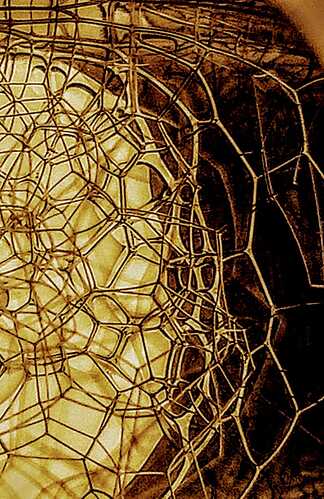In quarantine, I came across a polygonal foam on the inside of a handwash bottle. I was struck by the peculiar structure and decided to look more into it.
I got to know that this type of structure occurs in a lot of places in nature like the pattern on Giraffe skin and dragonfly wings is the same as that of foam. Also, the cellular structure wood at 100 microns, and a stain of nanoparticles at 100 nm. Moreover, I read that at the largest lens scales, the distribution of galaxies is best described by a foam-like network. The fact that this same pattern crops up through a range of different lens scales, is mind-blowing to me.
I have many questions regarding this. For example, I wonder how Heisenberg’s uncertainty Principle would have to do with the idea of quantum foam, and how that varies with any soap foam. Also if it is possible to predict the behavior of froth in the oceans with respect to each bubble separately. I am also interested to study the phenomenon of the branching of light through a soap film.
While reading about Foam Physics, I came across some written works about foam. I found them very interesting and helpful. I am deeply interested in learning more and doing a project in the form of the analysis of the foam structure. I am confused about how to methodically go about it and do something definite and productive.
To observe how small bubbles shrink away and large ones grow. To observe how large bubbles will grow for a while, but eventually be overtaken and then shrink away. All this is driven by surface tension, which drives a reduction in total film area without there being any film rupture. From an initial state, the system will evolve into “statistical self-similarity” where the distribution of bubble shapes is constant and the average bubble radius grows as the square root of time. Can one observe this in your soap bottle? Can one make a floating raft of bubbles (only one layer deep) and see the same thing?


